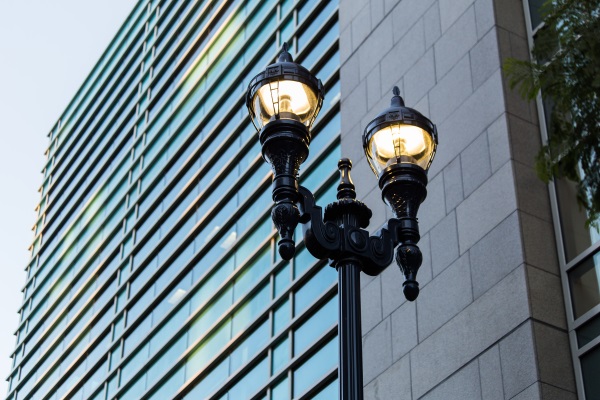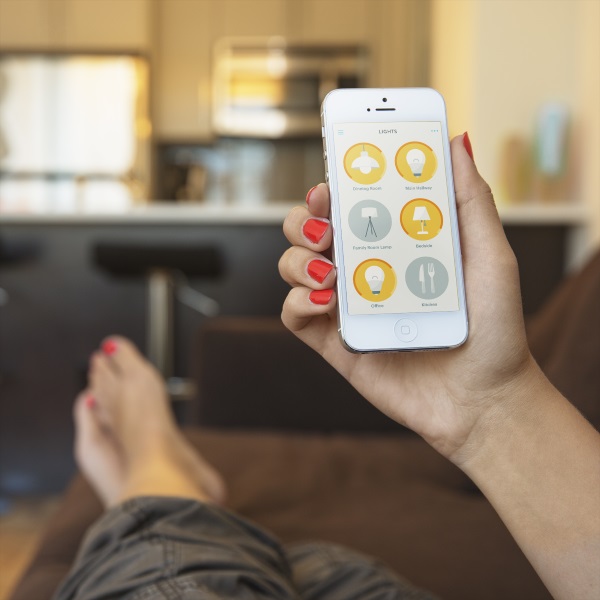BY RICK FREEMAN, GE Global Product General Manager of Intelligent Devices,
GE Lighting Products,
Light that can listen, learn and see? That’s a reality in the next era of lighting innovation in a world where lighting will truly change the way we live, work and play. From intelligent cities to intelligent buildings to connected homes, light is connecting to data to unleash a whole new world of possibilities for how we utilize lighting.
Light has remained essentially the same for a century, you might say. So what changed? The answer is two-fold: Better light-emitting diodes and lower-cost sensors, wireless transmitters and microprocessors. LED technology has made major strides in recent years. Early products struggled to produce a quality light or simply, enough of it. Today, however, the quality and light output of LED lamps and fixtures is comparable, if not superior to, traditional sources.
The result is rapidly increasing adoption, particularly in the commercial sector where LED installations and retrofits are taking place in supermarkets and department stores, banks, office buildings, hotels, restaurants, arenas, warehouses and many other types of facilities. In fact, according to a report by global management consulting firm McKinsey & Company, LED usage will reach about 70 percent in commercial environments by 2020, up dramatically from just between 10 to 20 percent today.
At the same time, advances in electronics and manufacturing have ushered in a new generation of much smaller, more powerful, less expensive wireless sensors, transmitters and processors that easily integrate with LED lights, which operate as semiconductors (where illumination is achieved by movement of electrons through a semiconductor material, opposed to sending an electrical discharge through an ionized gas).
It all has the industry excited, and rightly so. This convergence of intelligence and infrastructure has far-ranging implications and the potential to create realities limited only by imagination.
Intelligent Cities
Parking downtown is a pain, but not in the intelligent city of the future. Networked LED street lights—the neurological system of the interconnected metropolis—will have the ability to direct drivers to available spaces with the help of built-in image sensors and wireless transceivers.
The same streetlight in San Francisco could serve as a seismic sensor and act as an indicator beacon in the event of an earthquake. Warnings or instructions could be carried across a public-address speaker concealed within the light post, as well. A push-to-talk system, meanwhile, could prove invaluable in an emergency response situation.
These features may be aspirational but demonstrate how, sooner rather than later, LED streetlights will be a critical part of high-performing networks that give cities a real-time view of what’s going on.
In fact, some are already discovering what’s possible, including the city of San Diego that’s now using wireless microprocessors to move toward a metered (rather than flat-rate) tariff for its streetlight energy usage with its local utility company. The technology provides accurate energy metering (specific usage information) of San Diego’s LED streetlights, allowing the city to pay only for what it uses.

San Diego is using lighting intelligence to pay a metered rate for the electricity its LED street lamps use
Presently, LED penetration in roadway lighting is less than 10 percent across the U.S., but that’s about to change, says the U.S. Department of Energy (DOE). In its latest energy savings forecast, the DOE predicts that 83-percent of street/roadway lighting will be LED by 2020, with almost 100-percent being LED by 2030. From parking and traffic to temperatures, humidity, precipitation, ozone levels and pollution, streetlights are positioned to be the key real estate that indicates how certain attributes of a city are performing.
The bottom line is that cities are beginning to understand that intelligent street lighting can make a big difference—saving money, making money, enhancing citizen satisfaction and, ultimately, leaving a lasting impact.
Intelligent Buildings
Facilities such as offices and high-rises can also capitalize on the digital nature of LED to connect lights and sensors to each other and to a building's IT network. The result can be a rich array of location-specific data on room occupancy, amount of daylight, temperature, humidity and other variables. Using this data, the technology mediates environmental, user and building information to both save energy and maintain occupant comfort.
As with sensors and transmitters, lighting processors are becoming more sophisticated and less costly, and widespread commercial adoption remains only a matter of time. In fact, Title 24 of the California Energy Commission’s efficiency standards mandates the use of lighting processors in some new buildings. Enacted in 2013, it is among the first pieces of legislation of its kind, and, undoubtedly, an indication of things to come.
Integrated microprocessors—where lighting control is interfaced with a building automation system (BAS) to simultaneously manage heating, ventilation and cooling (HVAC)—have the greatest potential to elevate operations to new levels of efficiency and effectiveness. For instance, an intelligent office might know to automatically dim lights on a sunny day to limit wasteful energy use or turn down the heat in a crowded conference room to keep occupants comfortable.
Light is even changing the way we experience retail stores. Indoor location technology—a form of Visible Light Communication (VLC)—is making it possible for lights to “talk” to shoppers by leveraging LED modulation (the “pulse pattern” produced by an LED light source, which is unique, like a fingerprint).
This pattern, while imperceptible to the human eye, can be detected by the cameras on smartphones and tablets, meaning LED fixtures with embedded sensors can pinpoint a customer’s exact location in a store—provided that customer opts in and is currently using the retailer’s app on a mobile device.
For store owners, this creates a tremendous opportunity to deliver new value to consumers, from personalized shopping lists and easy-to-follow maps to product info and special offers or coupons based on where a person is standing in a particular aisle, relative to specific goods or merchandise.
And not a moment too soon, say many. To better understand the impact of smartphones and online information on in-store shopping, Google recently partnered with Ipsos MediaCT and Sterling Brands for an online survey. The study revealed that consumers want more information and customized experiences during their shopping journey: Two in three shoppers who tried to find information within a store say they didn't find what they needed, and 43 percent of them left frustrated. Meanwhile 71 percent of shoppers who use smartphones for online research say their device has become more important to their in-store experience as well.
Beyond the retail industry, lighting-based indoor positioning systems also could see application in airports, hotels, hospitals and many other environments where it is beneficial to know one’s exact location.
Intelligent Homes
Affordable, connected solutions are even making it possible for people to manage the lighting in their homes from anywhere in the world. Intelligent LED bulbs that can be controlled via smartphone are now available for as little as $15. These fit standard sockets and connect to a central hub in the house ($30-$60 extra), allowing individual or group control of dimming and scheduling (automating lights to turn on when you wake up, turn off when you leave or dim when bedtime approaches).
In time, bulbs could even be “taught” to respond to an individual’s presence or a change in light level thanks to learning algorithms that record and recall personal preferences. The fact is lighting is just one aspect of the future connected home, where appliances such as washers, dryers, ranges and refrigerators all function from a single, unified hub. It’s all further proof of technology’s power to bring us together—minds and machines.

Wash the dishes, start the dryer and dim the lights all from the comfort of your couch? Well, why not!
Light has changed little over a century, but thanks to smaller sensors, smarter processors—and big imaginations—the years ahead promise an unprecedented shift in the role lighting plays in our lives. We won’t know it at first, but when parking’s a cinch and shopping’s done in a snap, and we return to our warmly lit homes, then we’ll feel light’s touch all around us, comforting us and connecting us in all new ways.
Advertisement
Learn more about GE Lumination





